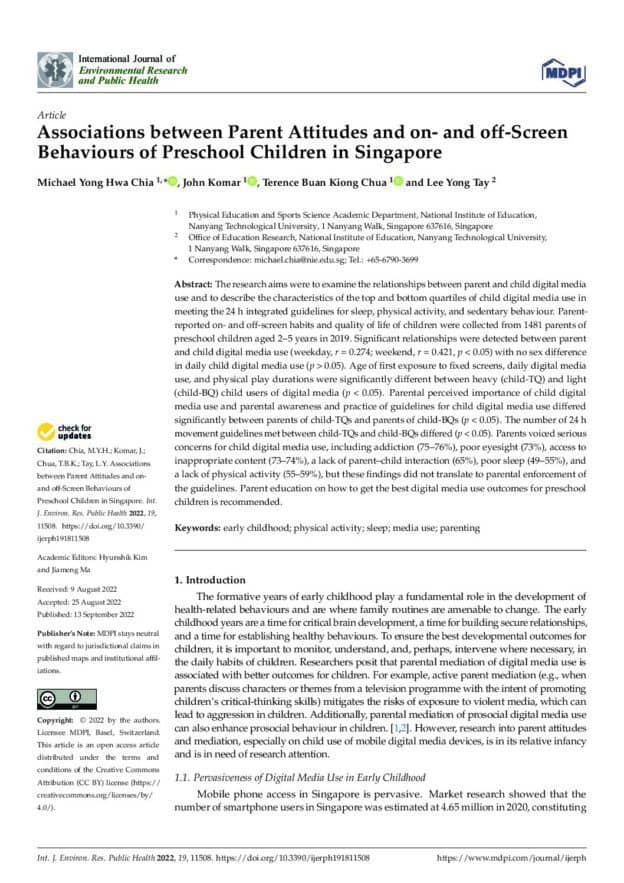Abstract
The research aims were to examine the relationships between parent and child digital media use and to describe the characteristics of the top and bottom quartiles of child digital media use in meeting the 24 h integrated guidelines for sleep, physical activity, and sedentary behaviour. Parent-reported on- and off-screen habits and quality of life of children were collected from 1481 parents of preschool children aged 2–5 years in 2019. Significant relationships were detected between parent and child digital media use (weekday, r = 0.274; weekend, r = 0.421, p < 0.05) with no sex difference in daily child digital media use (p > 0.05). Age of first exposure to fixed screens, daily digital media use, and physical play durations were significantly different between heavy (child-TQ) and light (child-BQ) child users of digital media (p < 0.05). Parental perceived importance of child digital media use and parental awareness and practice of guidelines for child digital media use differed significantly between parents of child-TQs and parents of child-BQs (p < 0.05). The number of 24 h movement guidelines met between child-TQs and child-BQs differed (p < 0.05). Parents voiced serious concerns for child digital media use, including addiction (75–76%), poor eyesight (73%), access to inappropriate content (73–74%), a lack of parent–child interaction (65%), poor sleep (49–55%), and a lack of physical activity (55–59%), but these findings did not translate to parental enforcement of the guidelines. Parent education on how to get the best digital media use outcomes for preschool children is recommended.



Responses